Gallery walls have never belonged to a single era, and that’s why they remain magnetic today—morphing from stately salon clusters in 1600s France to the expressive, all-about-you compositions now crowding design feeds. Experts note that the format is not “over,” but evolving toward more personal, layered displays that age well instead of chasing quick trends. Recent color and scale shifts—think juicy guava backdrops or one oversize canvas ruling the arrangement—show how a well-planned gallery wall still delivers maximum storytelling with minimal square footage. Ready to curate your own statement? Explore the 20 fresh ideas below and let the frames do the talking.
1. Template First: Gallery Wall Paper Mock-Ups
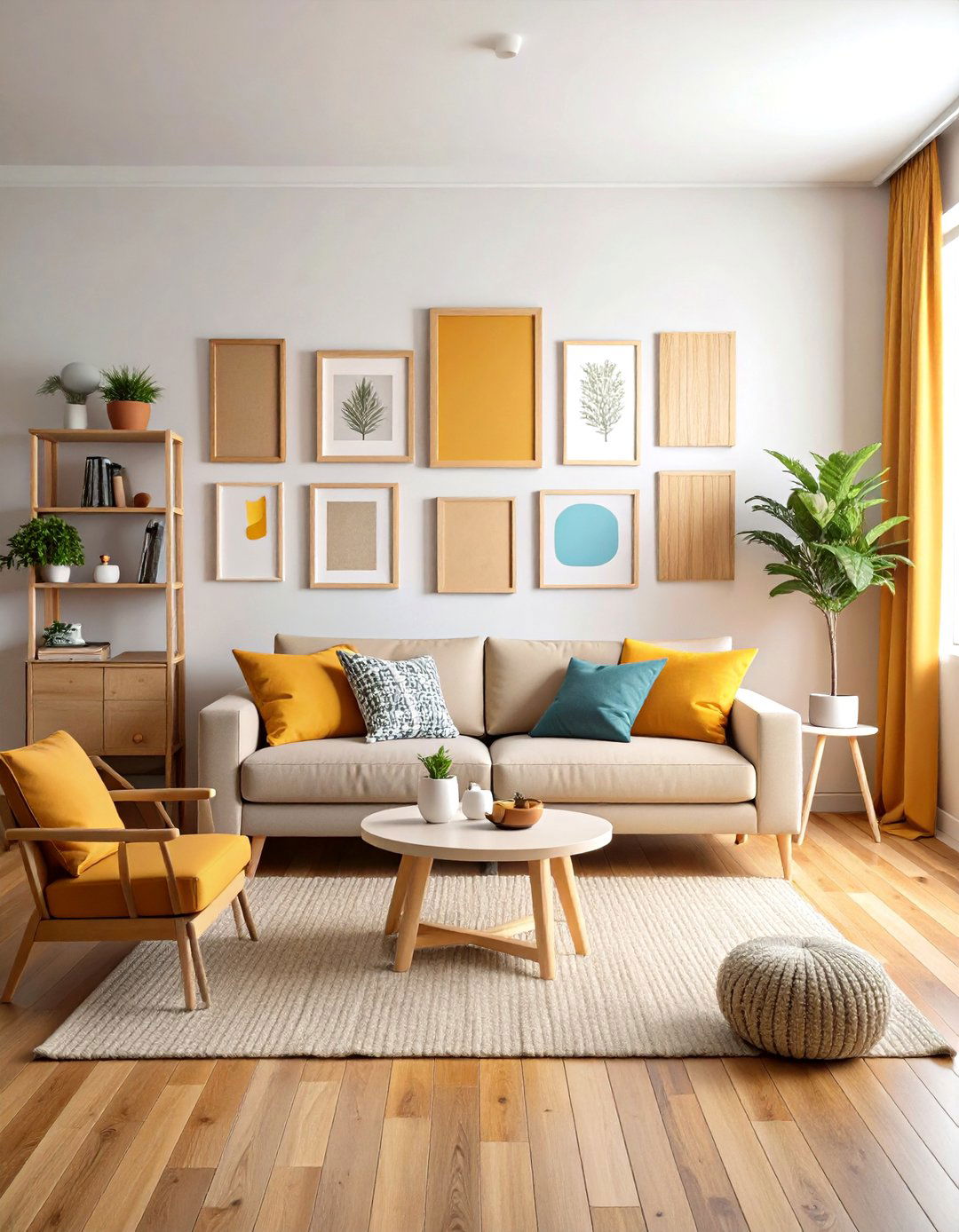
A big roll of kraft paper and painter’s tape turns your living room into a life-size sketchpad, letting you trace each frame, cut it out, and shuffle the shapes around until the spacing feels right. This low-commitment rehearsal prevents extra nail holes and helps you judge balance from every seat in the room. Once you like the layout, hammer right through the paper, peel it away, and hang with confidence. Using this mock-up trick also frees you to test bold focal points—say, an asymmetric anchor piece—before making anything permanent, ensuring your gallery wall lands exactly where imagination meets reality.
2. Eye-Level Anchor: Centering Your Gallery Wall

The simplest way to avoid a “floating” look is to start with the largest or most important piece at 57 inches on-center—the average eye-level sweet spot museums swear by. From there, build outward in tight two- to three-inch gaps so smaller works feel intentionally tethered to that anchor rather than scattered. If ceilings soar, scale up art instead of hanging higher; letting the composition breathe above furniture maintains harmony without straining necks. This disciplined height rule keeps a gallery wall cohesive whether it rides above a sofa, hugs a headboard, or tracks across an entryway console.
3. Geometric Order: Grid-Style Gallery Wall
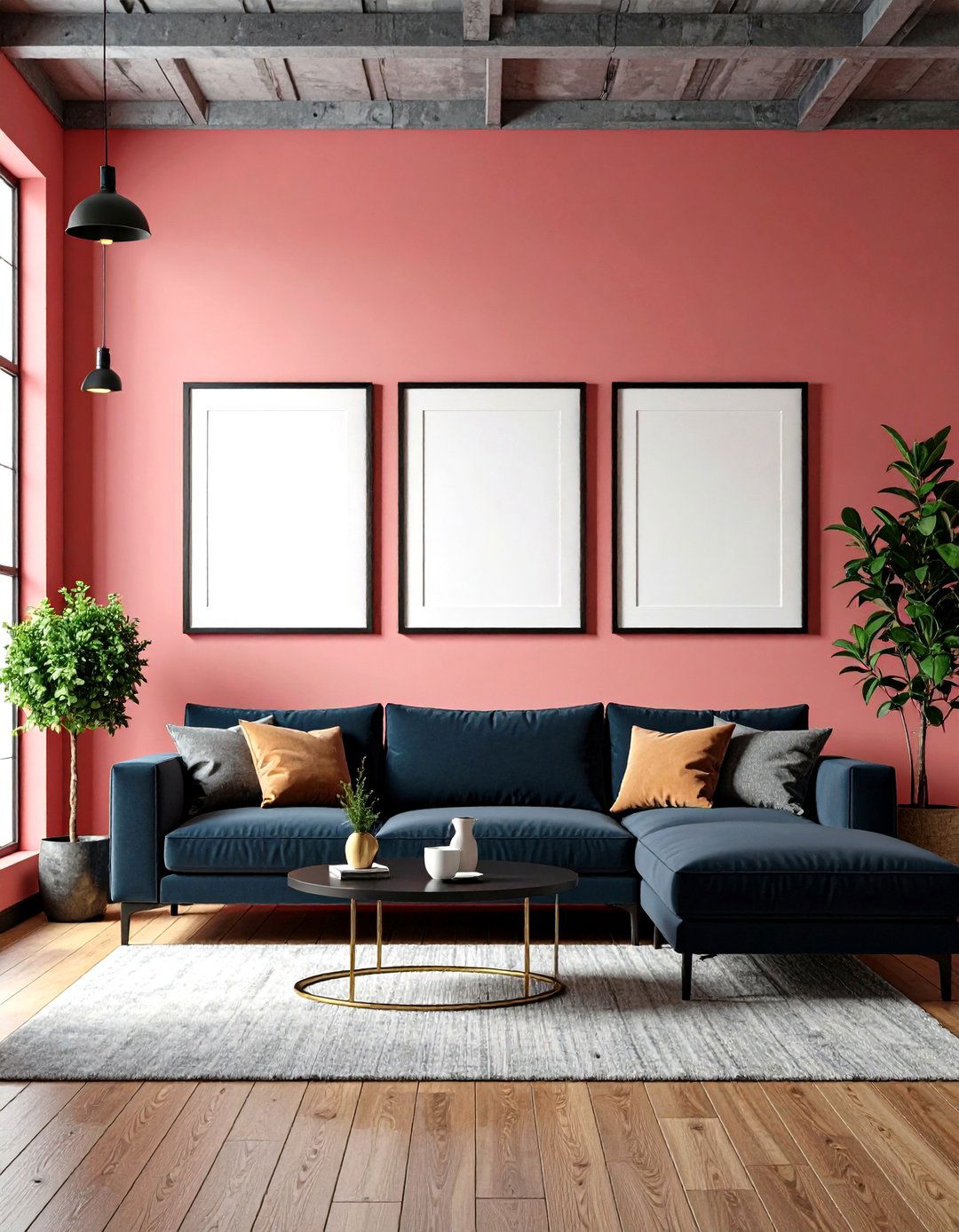
Unlike free-form arrangements, a strict grid delivers instant calm thanks to identical frame sizes, equal margins, and perfect row-and-column symmetry. Tape a laser level across the wall, mark corner points, and work from the center out to avoid drift. Grids shine with architectural photography, botanical presses, or minimalist prints where repetition feels intentional. Because measurements repeat, you can swap artwork seasonally without re-spackling new holes—a hidden perk for serial decorators who crave change yet love precision. A grid-style gallery wall suits modern lofts, rental apartments, and offices that need polish without visual noise.
4. Collected Charm: Eclectic Gallery Wall Mix
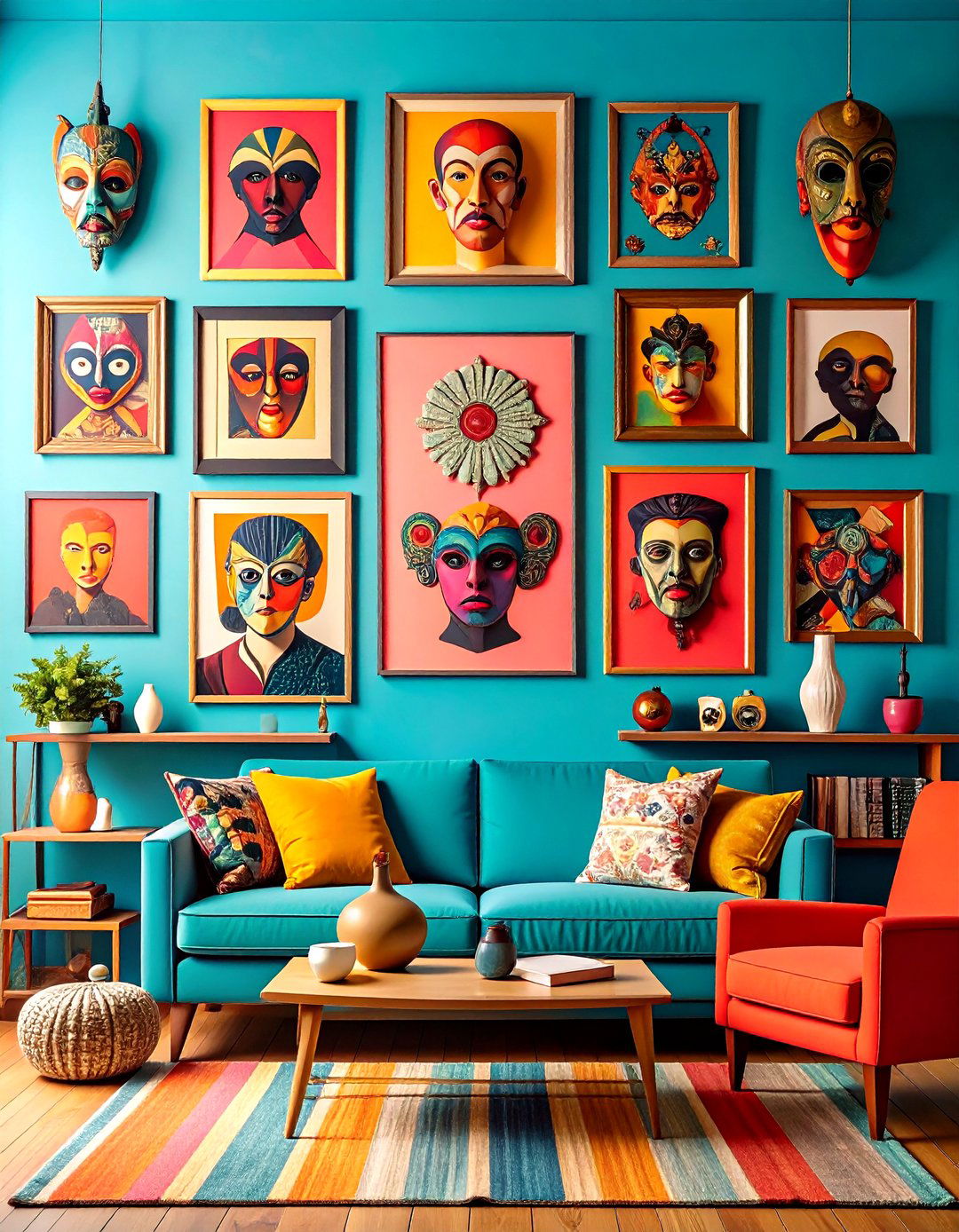
What makes an eclectic gallery wall sing is the “found-over-time” texture: mismatched frames, vintage portraits beside concert posters, maybe even a sculptural mask or tiny shelf. Varying size, depth, and medium adds energy, but cohesion still matters—carry one thread such as a unifying accent color or consistent mat style so the whole reads curated, not chaotic. Design pros say this organic approach sidesteps the copy-and-paste vibe critics dislike, turning the display into a living autobiography instead of a trend catch-up. Rotate pieces whenever new memories arrive to keep the story evolving.
5. Tone-on-Tone: Monochrome Gallery Wall
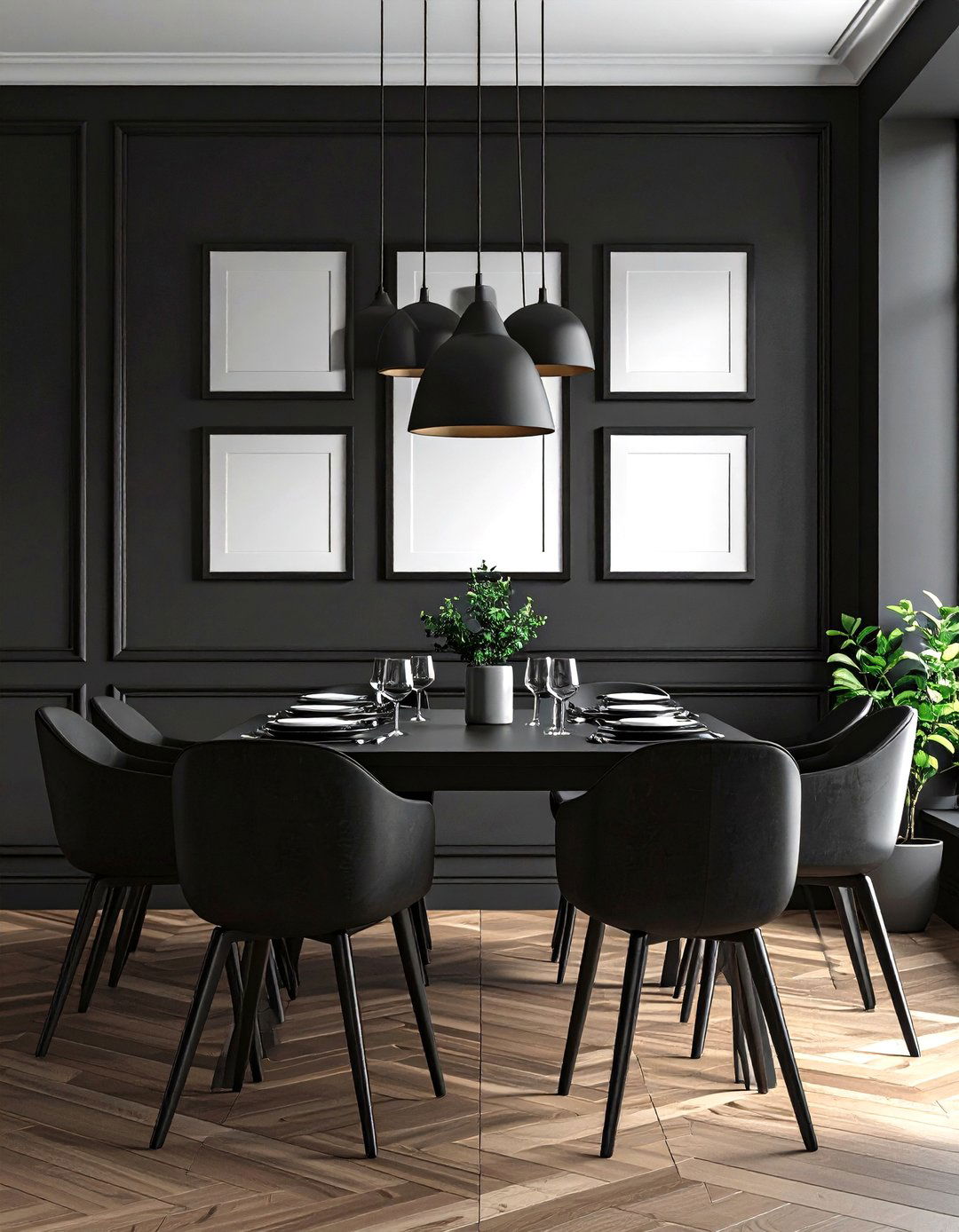
Surprisingly, limiting every frame, mat, and artwork to a single hue—navy, sepia, or charcoal—supercharges drama by letting texture and negative space do all the talking. Paint the wall in a slightly lighter or darker tone of the same color for depth, then layer matte-finished frames so reflections don’t break the spell. Monochrome gallery walls excel in moody dining rooms or powder baths where square footage is scarce but style stakes are high. Keep spacing tight so the block reads like one big art installation rather than separate bits fighting for attention.
6. Classic Contrast: Black-and-White Photography Gallery Wall

A corridor lined with crisp black-and-white prints never dates, and a limited palette helps even wildly different subject matter feel cohesive. Designers often ground high-contrast art on a dark backdrop—charcoal, deep green, or matte black—to make white borders glow like backlit film. Add small brass picture lights for a museum vibe, and mix candid family shots with architectural close-ups to introduce storytelling layers. Because the color scheme is settled, you can keep swapping new photos without worrying about clashing tones, making this gallery wall perfect for chronicling travel or generational milestones as they unfold.
7. Bold Focus: Oversized Art Gallery Wall
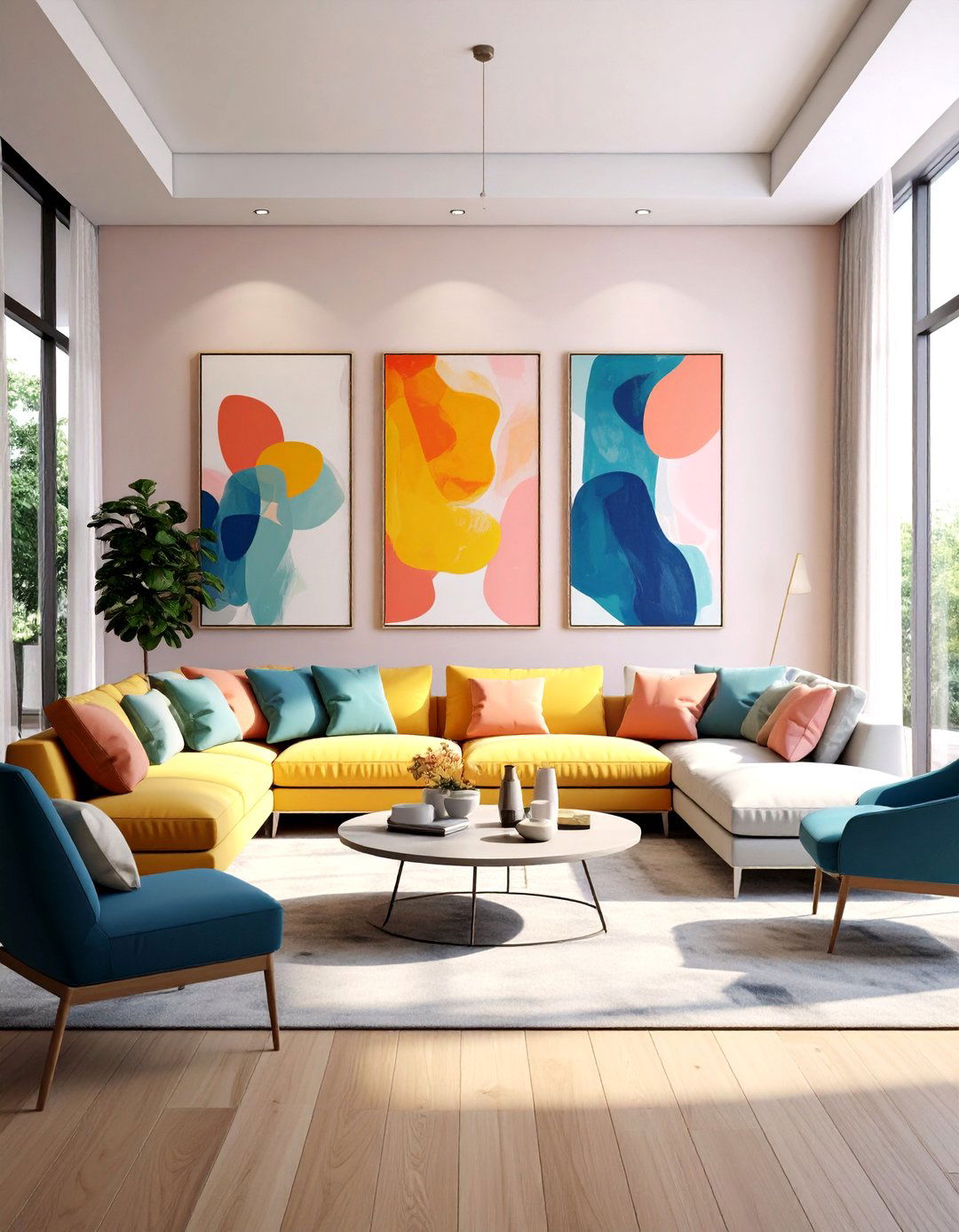
Take the “one-and-done” approach by letting a single 48-inch-plus statement piece dominate, then flank it with a few petite prints to echo palette or theme. Oversize art answers the modern push for maximal impact and instantly stretches perceived room height. Keep the supporting cast minimal so the star can breathe; think slim floating frames or no frames at all. This gallery wall idea nails open-concept living areas where traditional multi-piece groupings might feel fussy yet bare walls feel unfinished.
8. Texture Play: Mixed-Media Gallery Wall
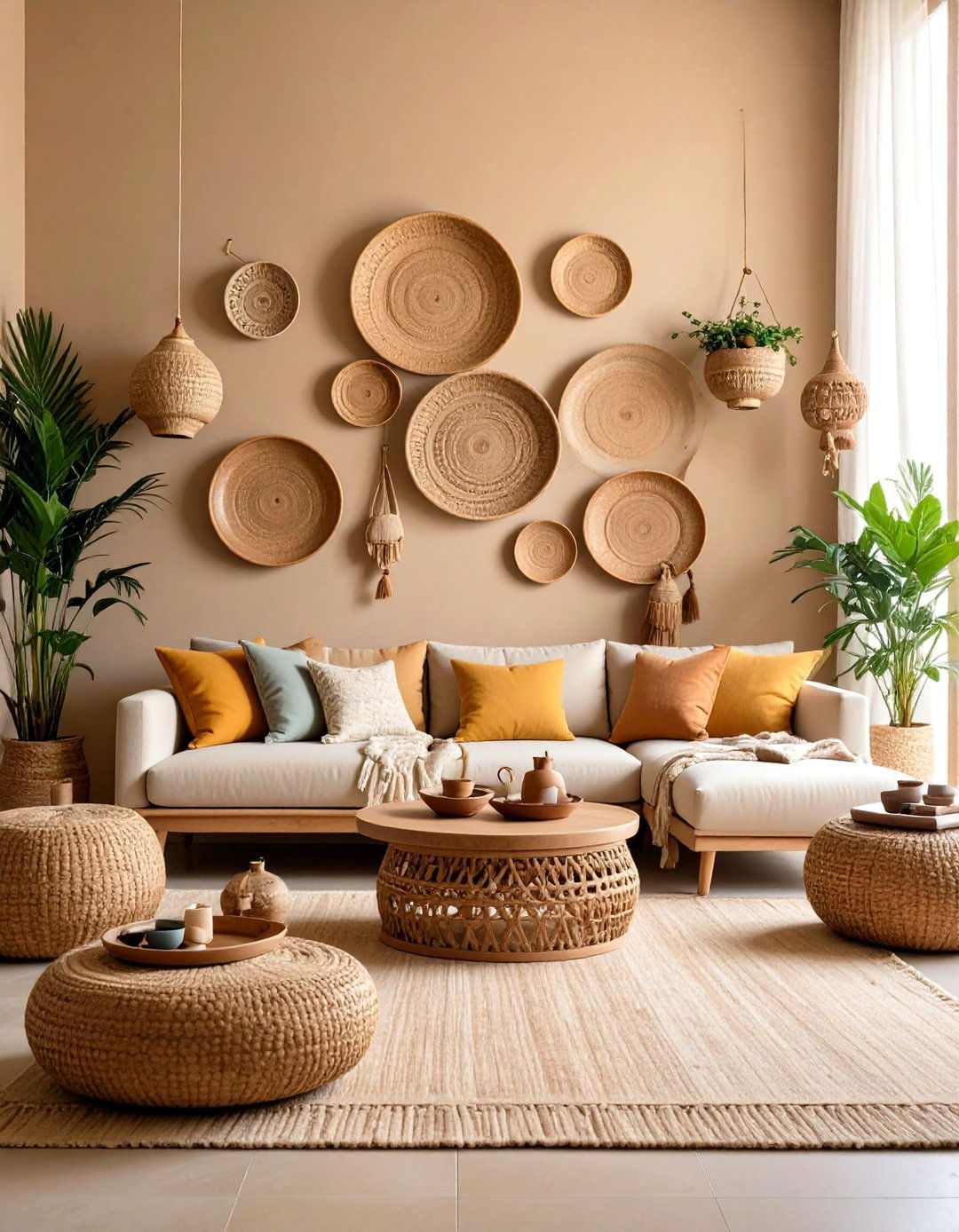
Instead of limiting yourself to framed paper, weave in shallow baskets, woven hats, ceramic plates, or three-dimensional textiles for tactile intrigue. Use sturdy plate hangers or invisible shelves to secure heavier items, staggering depths so shadows dance across the surface throughout the day. Mixed-media gallery walls thrive in boho bedrooms, global-inspired living rooms, or anywhere you want to showcase souvenirs that refuse to sit flat. Keeping a cohesive color story—say, all warm neutrals—prevents the look from tipping into garage-sale chaos while still celebrating material diversity.
9. Earth-Kind: Sustainable Gallery Wall Choices

Owing to the boom in eco-conscious design, recycled-aluminum frames and FSC-certified woods are now widely available, while bamboo or cork mats add subtle texture. Mix thrift-store finds with repaired vintage frames to reduce waste, and finish everything with low-VOC paints so off-gassing doesn’t taint indoor air. Hanging methods matter, too—choose reusable adhesive hooks or French cleats that survive multiple moves. A sustainable gallery wall doubles as a quiet values statement, reminding visitors that mindful curation can look as sharp as brand-new retail buys.
10. Joyful Junior: Kids’ Gallery Wall
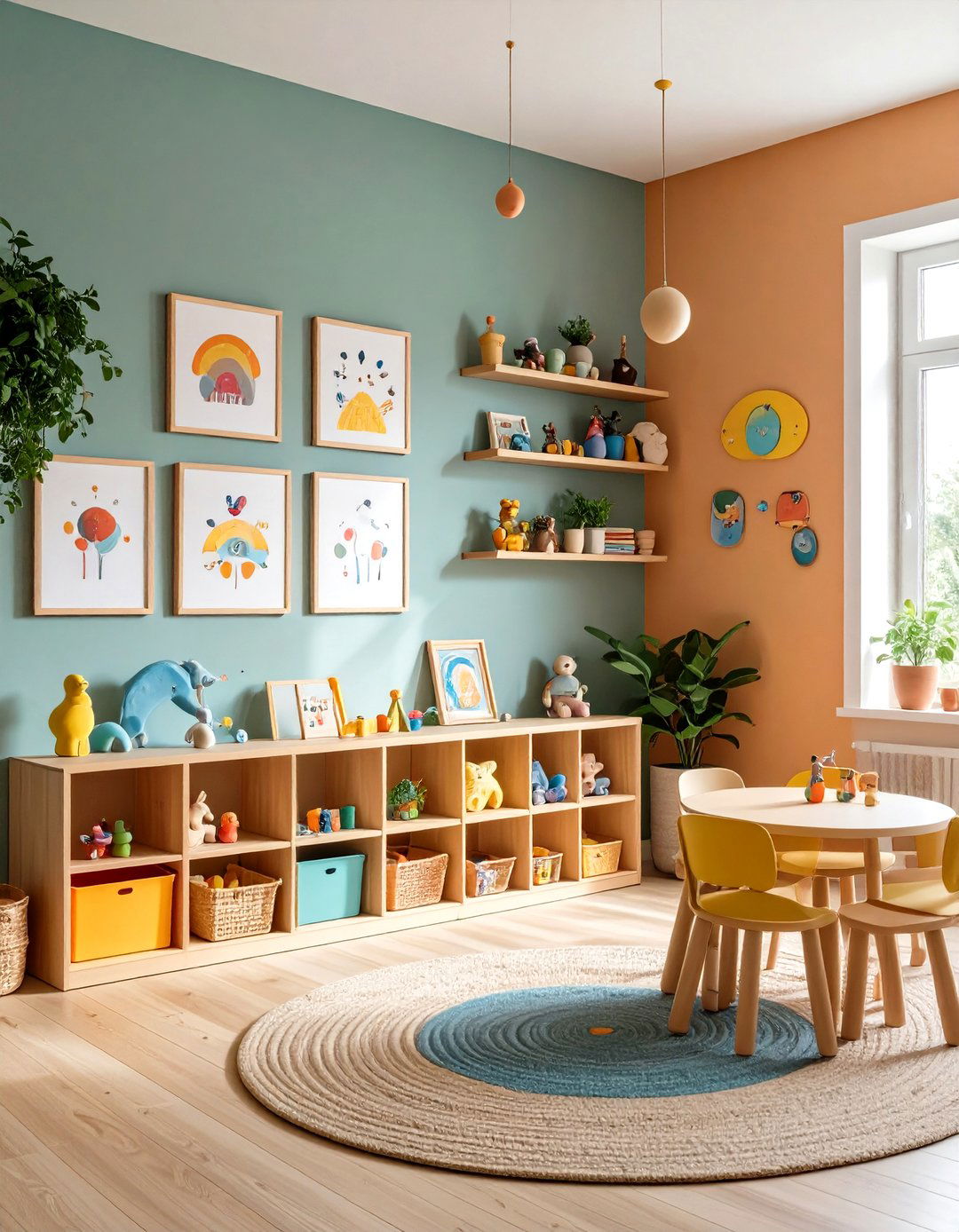
Children’s rooms beg for rotating displays of finger paintings, class photos, and storybook pages that grow along with imagination. Lightweight frames or front-loading changeable ones let little artists swap work safely without tools. Mount pieces lower than adult eye level so kids feel ownership; sprinkle in alphabet flashcards or tiny shelves for LEGO sculptures to foster interaction. Because color palettes shift as fast as favorite cartoons, keep backgrounds neutral and frames simple, ensuring the gallery wall evolves gracefully from preschool scribbles to tween photography.
11. Ascending Narrative: Staircase Gallery Wall
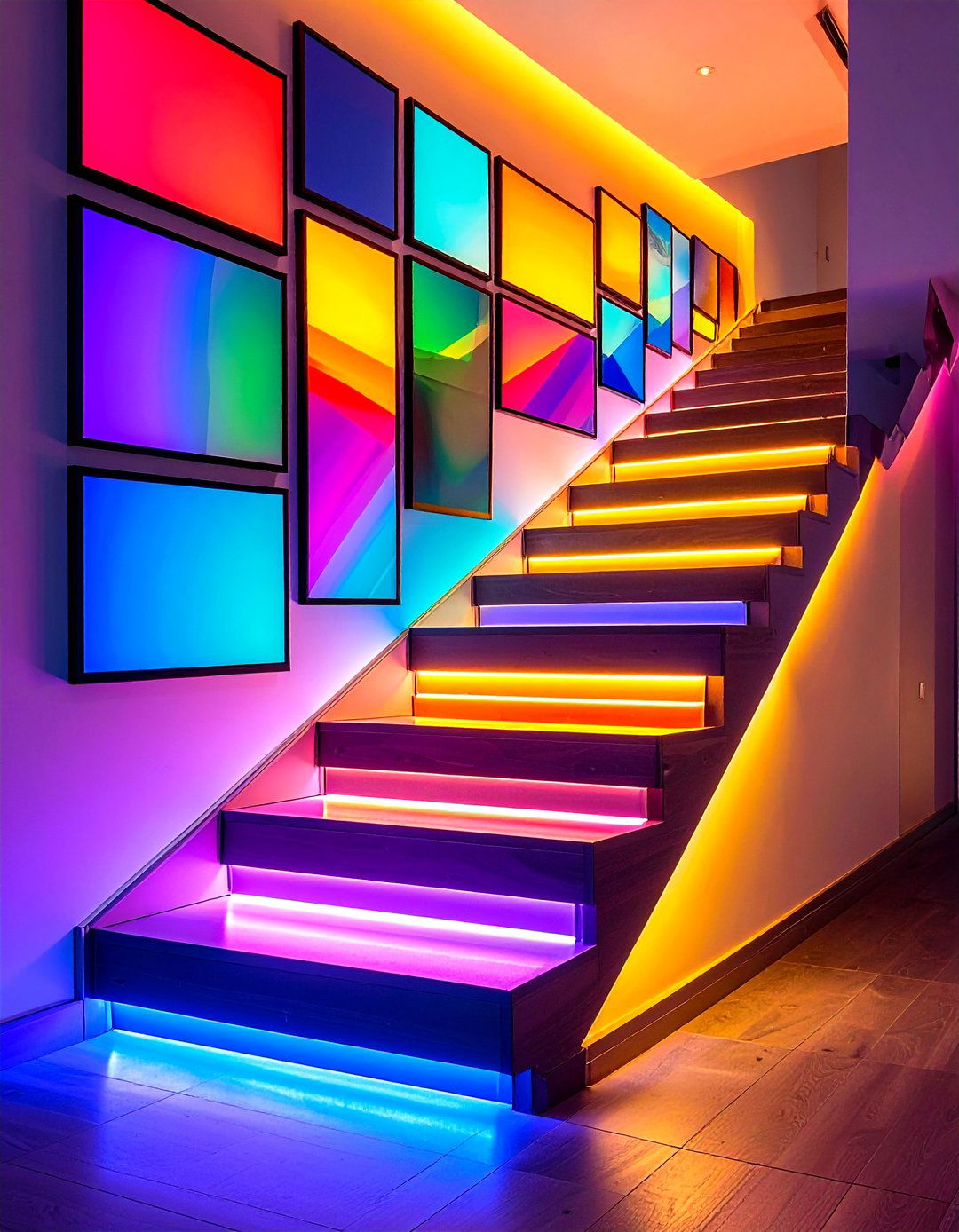
Following the rise of a staircase naturally guides the eye, so carry frame centers along the same diagonal as the handrail for harmony. Alternate portrait and landscape pieces to mimic step rhythm, and lean into vertical art that fills awkward triangular gaps near landings. Good lighting is crucial—install wall-mounted sconces or LED strip lights beneath each run to prevent dangerous glare. Because stair traffic passes fast, choose high-contrast images or bold graphic prints that register in a glance, giving your gallery wall cinematic energy.
12. Slim Spaces: Hallway Gallery Wall Stretch
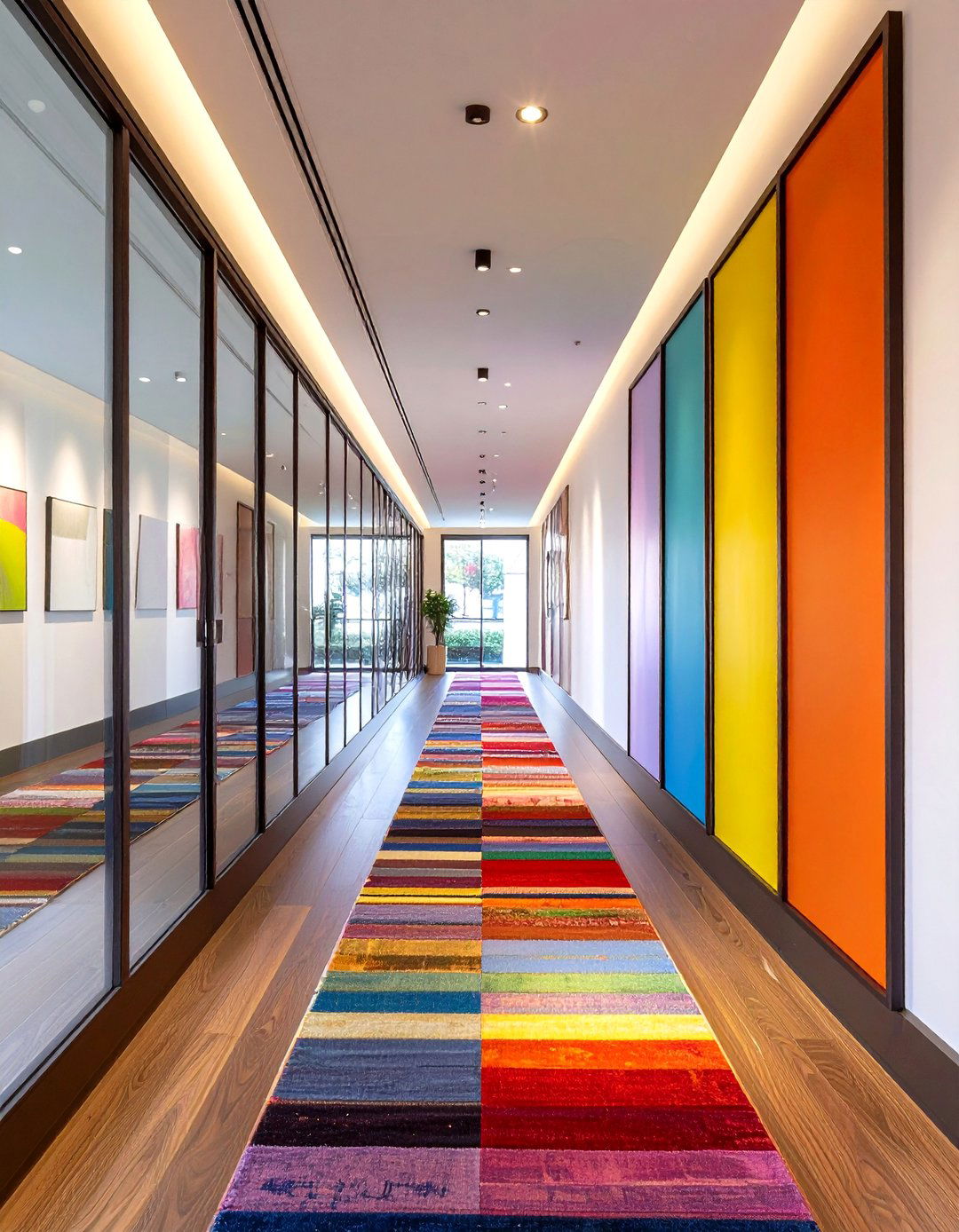
A narrow hallway can feel claustrophobic until you line one side with a tight, waist-to-ceiling ribbon of small-format art spaced about three inches apart—enough breathing room to keep sightlines clear. Opting for lighter frame colors or reflective glass keeps the passage bright, while a long runner rug pulls the whole vista together. If the corridor bends, use matching frames to carry momentum around the corner. A hallway gallery wall transforms “just passing through” into a miniature exhibit every time you fetch coffee or keys.
13. Swap-Ready: Ledge-Based Gallery Wall
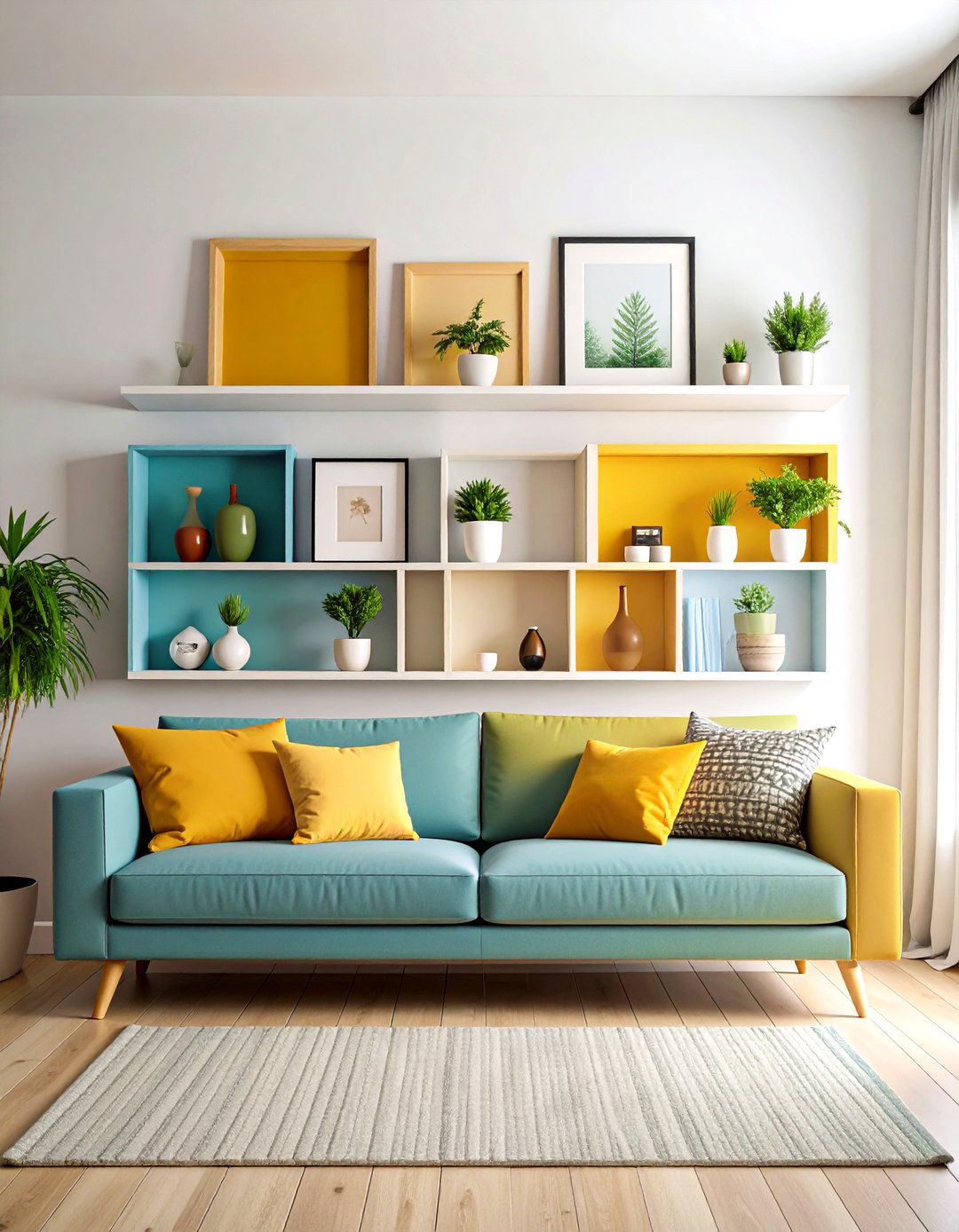
Picture ledges act like shallow bookshelves, letting you layer frames two deep, overlap edges, and refresh art in seconds—no hammer required after installation. Stagger multiple ledges vertically for a grand column effect, or run one ledge wall-to-wall above a sofa to ground a living area. Mixing canvases with small objects—clocks, mini planters—adds dimension. Because ledges forgive commitment-phobes, this gallery wall style suits renters, serial photographers, or anyone who rearranges décor with the seasons.
14. Clip & Change: Modular Gallery Wall
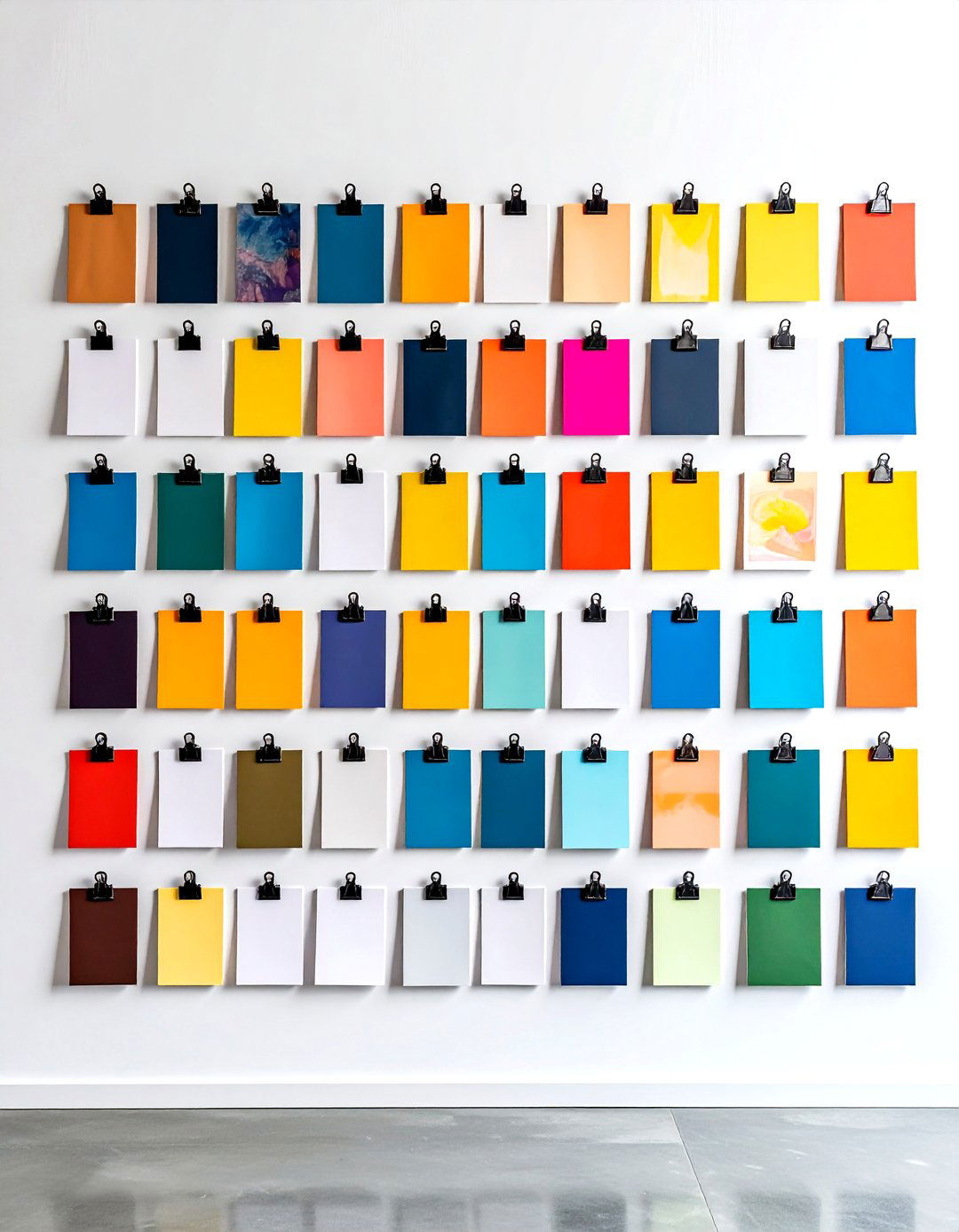
Quick-swap clip frames and gallery clips mean never pulling a nail when you crave new energy. The hardware grips unframed prints, posters, or kids’ report-card gold stars, sliding off and on with fingertip force. Create a salon-style explosion of color today, then a minimalist mood board tomorrow—your walls become a living sketchbook rather than static décor. Modular gallery walls are perfect for studios, classrooms, and offices where inspiration updates weekly.
15. Whispered Neutrals: Minimalist Gallery Wall
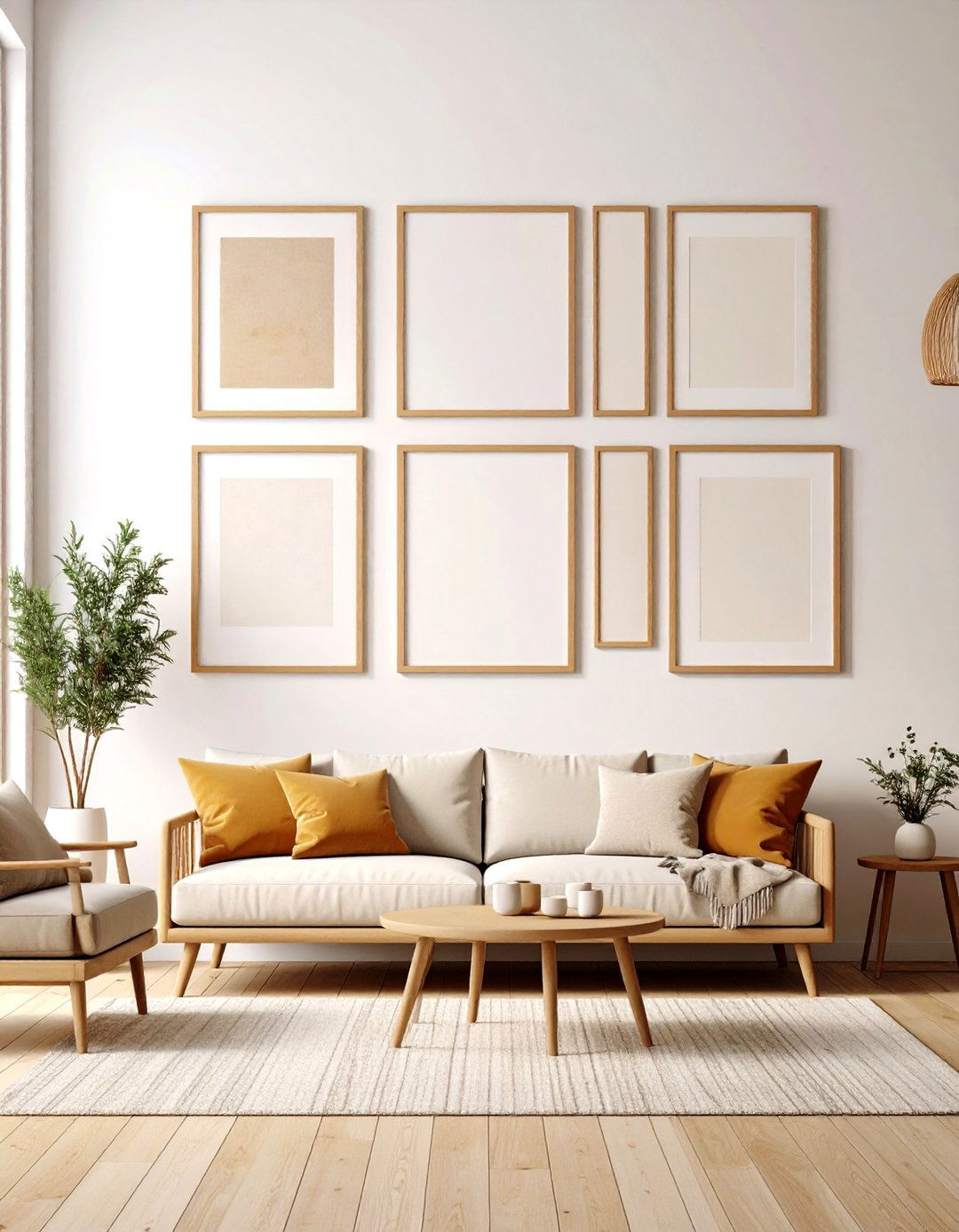
Neutral gallery walls showcase subtlety: linen mats, slim maple frames, and art washed in beige, taupe, or soft olive invite calm without veering bland. Keep spacing generous—four inches or more—to emphasize negative space. This restrained palette suits Scandinavian or Japandi interiors where texture and proportion rule. Add discreet picture lights or recessed LEDs to elevate tonal variations so muted strokes still read clearly after sunset.
16. Color Pop: Vibrant Background Gallery Wall
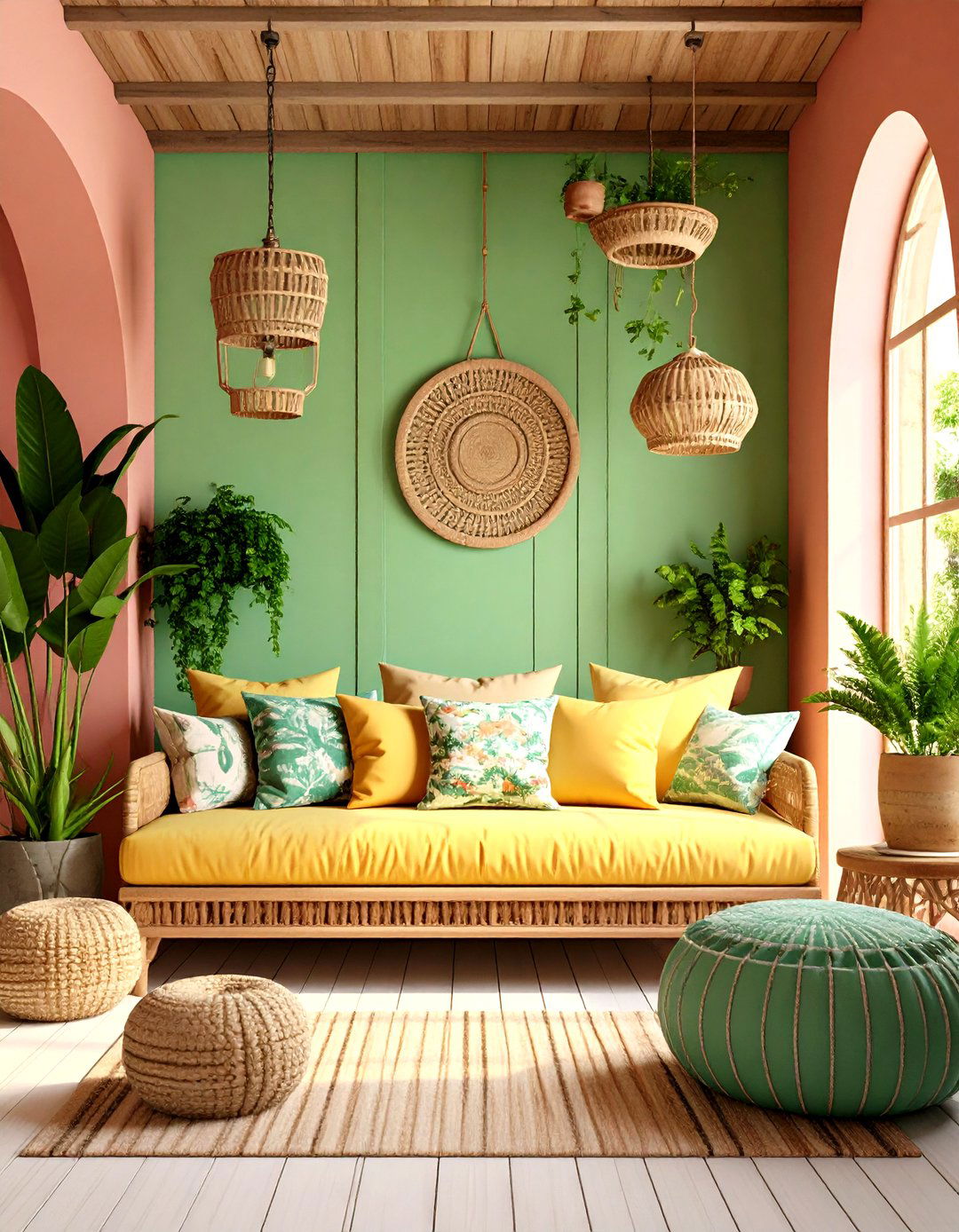
Painting the entire wall a trend-forward shade like guava instantly modernizes even thrifted frames, letting neutral artwork leap off the saturated canvas. Repeat the color in small doses—cushion piping, a planter—to integrate the burst into the broader palette. Because rich tones can shrink a room, limit this gallery wall idea to one accent wall or alcove and balance with plenty of natural light. The result feels confident, curated, and cheerful.
17. Seasonal Switch-Out: Rotating Gallery Wall
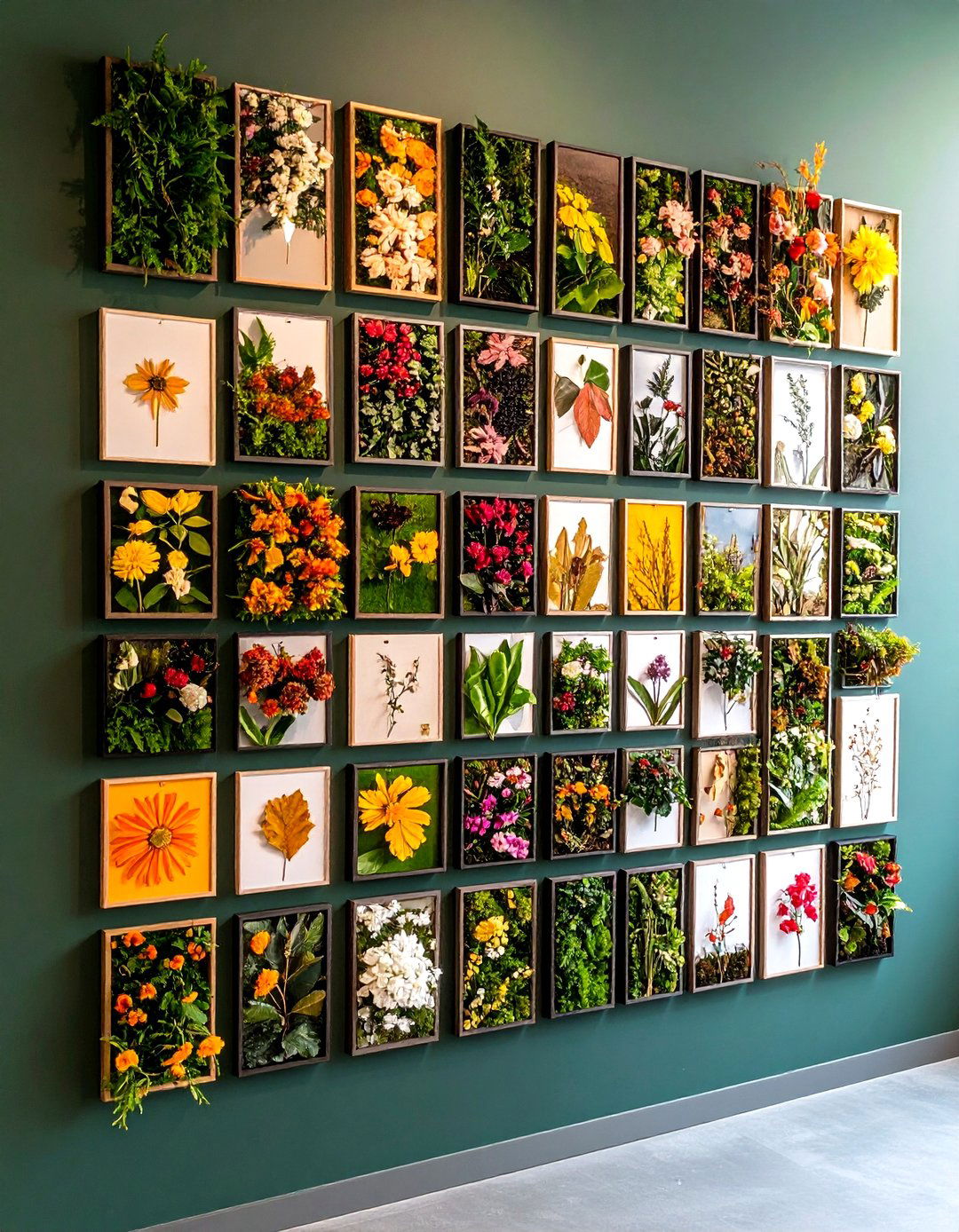
Lightweight contemporary frames with rear storage let you tuck unused prints behind the current display, making quarterly refreshes painless. Keep a labeled envelope of winter botanicals, summer travel shots, or fall family portraits inside each frame so the swap becomes a five-minute ritual. A rotating gallery wall keeps décor aligned with mood, holidays, or even sports seasons without adding clutter to closets, and guests always notice the subtle novelty.
18. Wanderlust Memories: Travel Gallery Wall
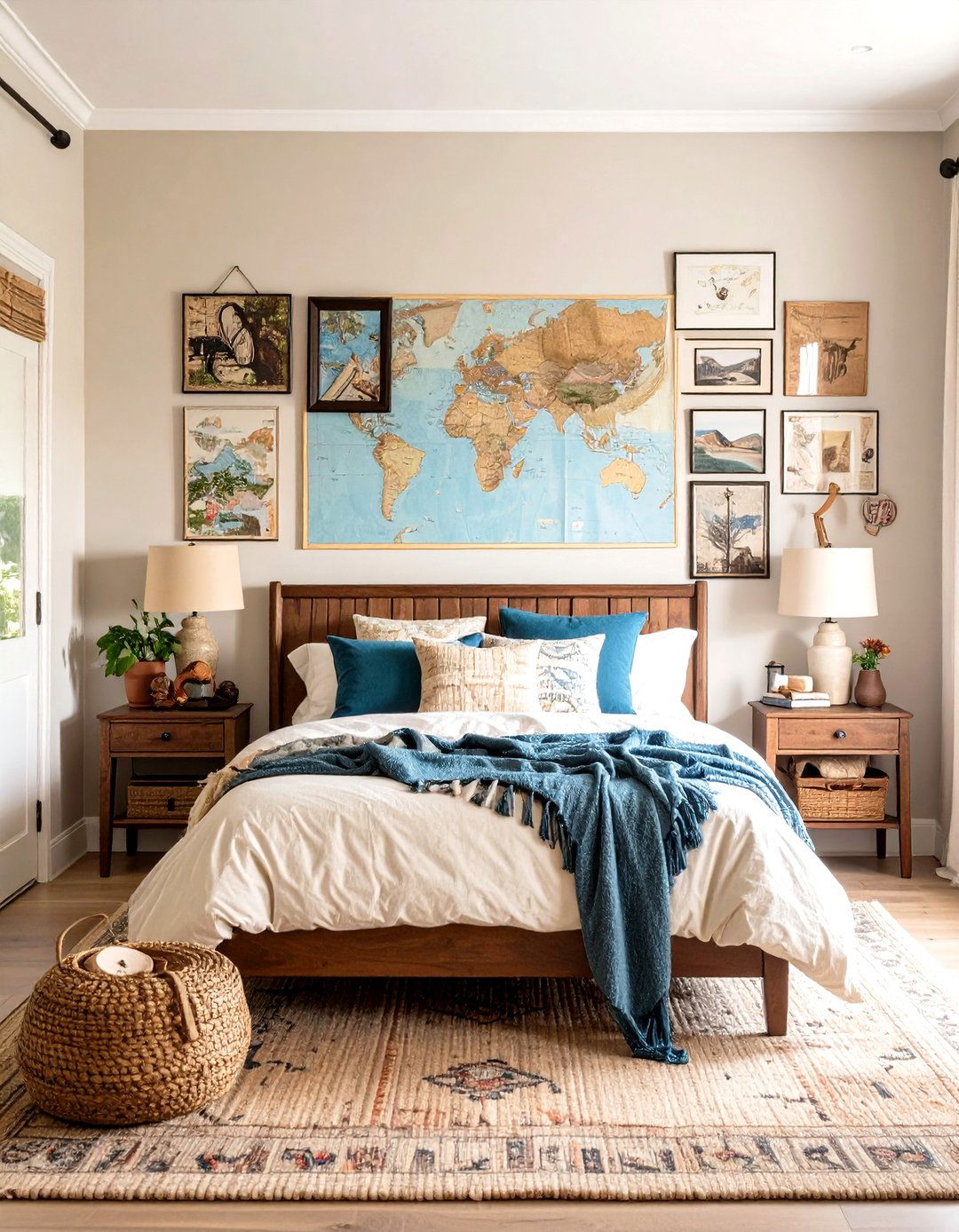
Map clippings, boarding-pass stubs, and candid street photos turn white space into a passport stamp collection. Layer city silhouettes in fine-line prints beside macro shots of market spices so scale varies like trip experiences. Use thin black frames to standardize look, then add simple captions typed on vellum for built-in storytelling. A travel gallery wall sparks conversation and reminds you daily of places that shaped you, urging the next adventure.
19. Light Multiplied: Mirror Gallery Wall
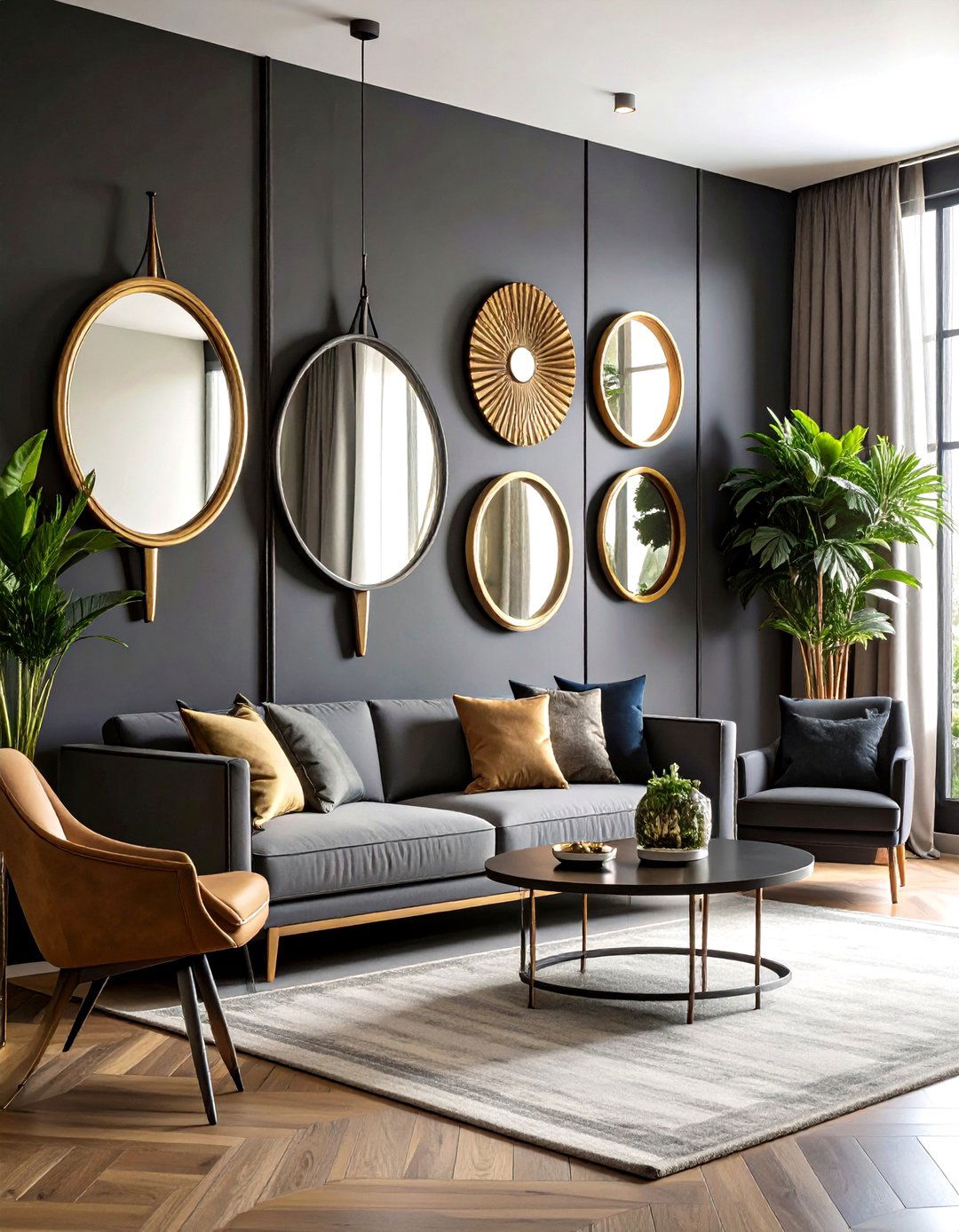
Strategically tucking funky mirrors among artwork bounces daylight deep into darker rooms while amplifying the composition. Designers forecast sculptural, odd-shaped mirrors as a continuing wall-art trend for their double duty: décor and lumens. Keep reflected clutter in check by angling mirrors slightly downward or toward a calm vignette, ensuring the gallery wall stays intentional—not kaleidoscopic.
20. Airy Details: Floating Frame Gallery Wall
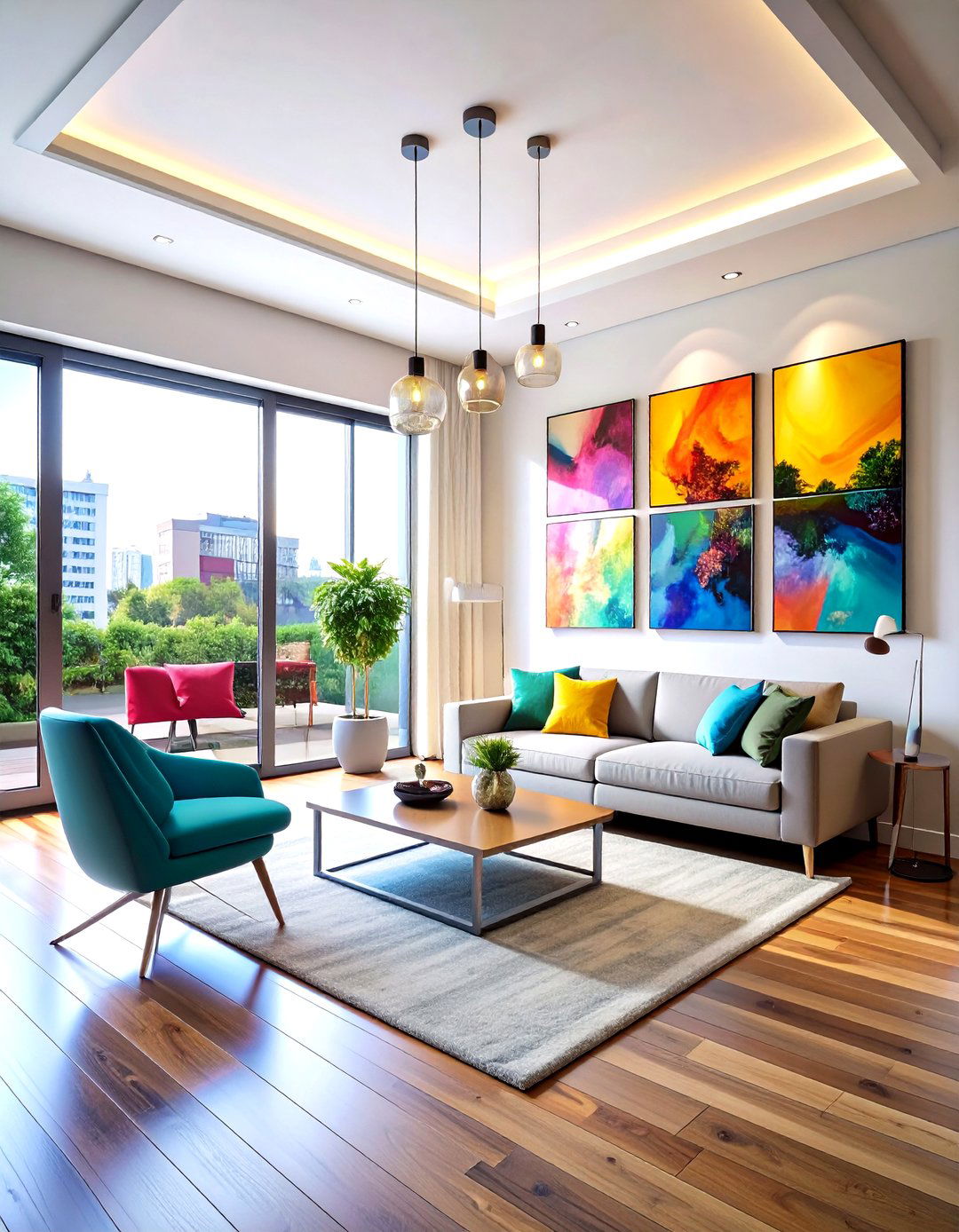
Acrylic floating frames sandwich prints between clear panels, letting wall color halo each piece and creating the illusion of art hovering mid-air. Use metallic standoff bolts or hidden cleats for a jewel-box effect that feels both contemporary and weightless. Because edges disappear, floating frames work wonders in small apartments where heavy borders crowd sightlines. Stick to uniform sizes for a sleek grid or mix scales for playful rhythm; either way, the gallery wall feels as light as it looks.
Conclusion:
Curating a gallery wall is less about rigid rules and more about orchestrating light, color, texture, and personal narrative until the arrangement feels like an extension of you. From eco-minded reclaimed frames to mirror-lit staircases, each idea above proves there’s infinite room for creativity within those four corners of drywall. Keep the spacing intentional, the story authentic, and the swaps nimble, and your gallery walls will evolve gracefully—just like the life they’re meant to celebrate.


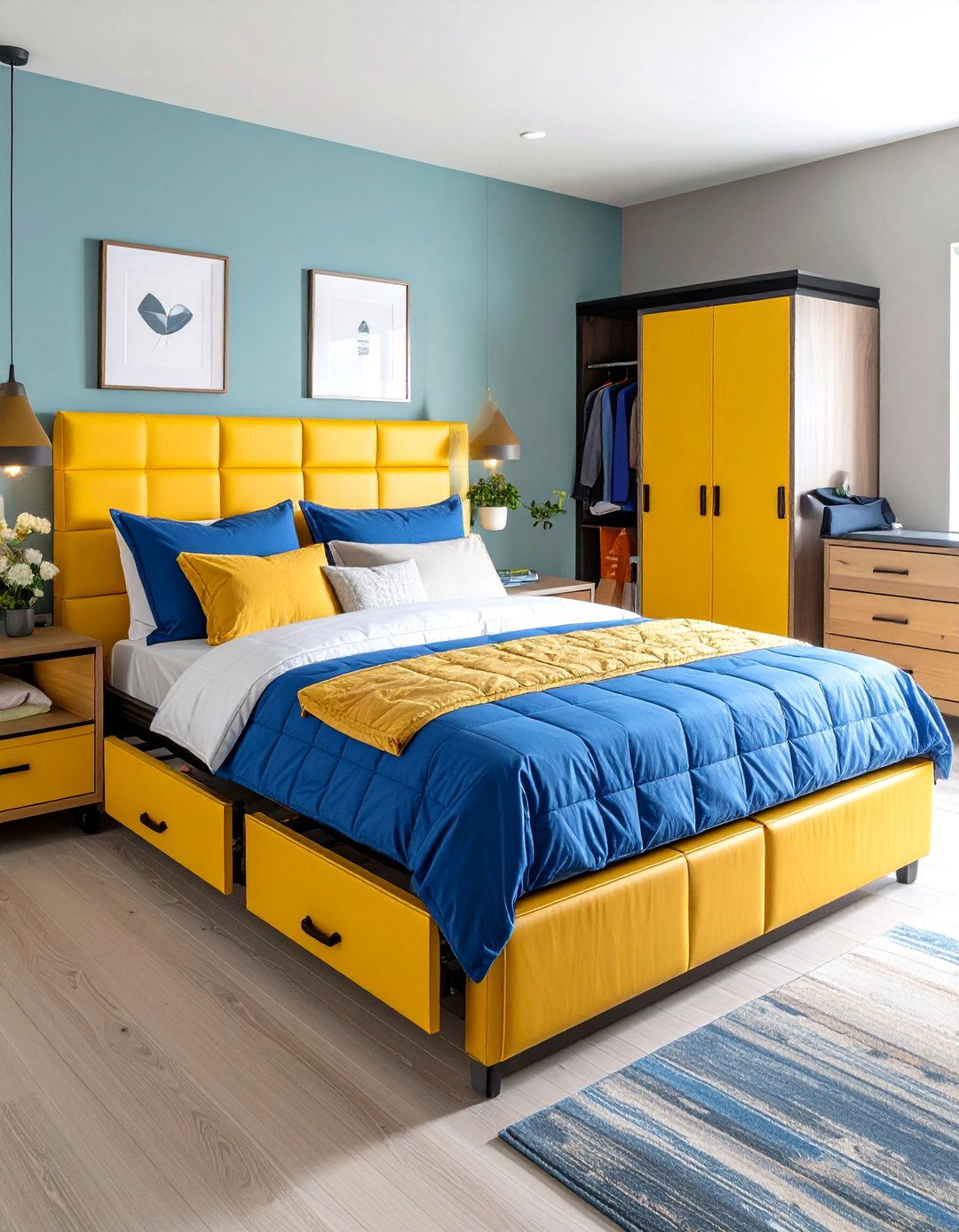

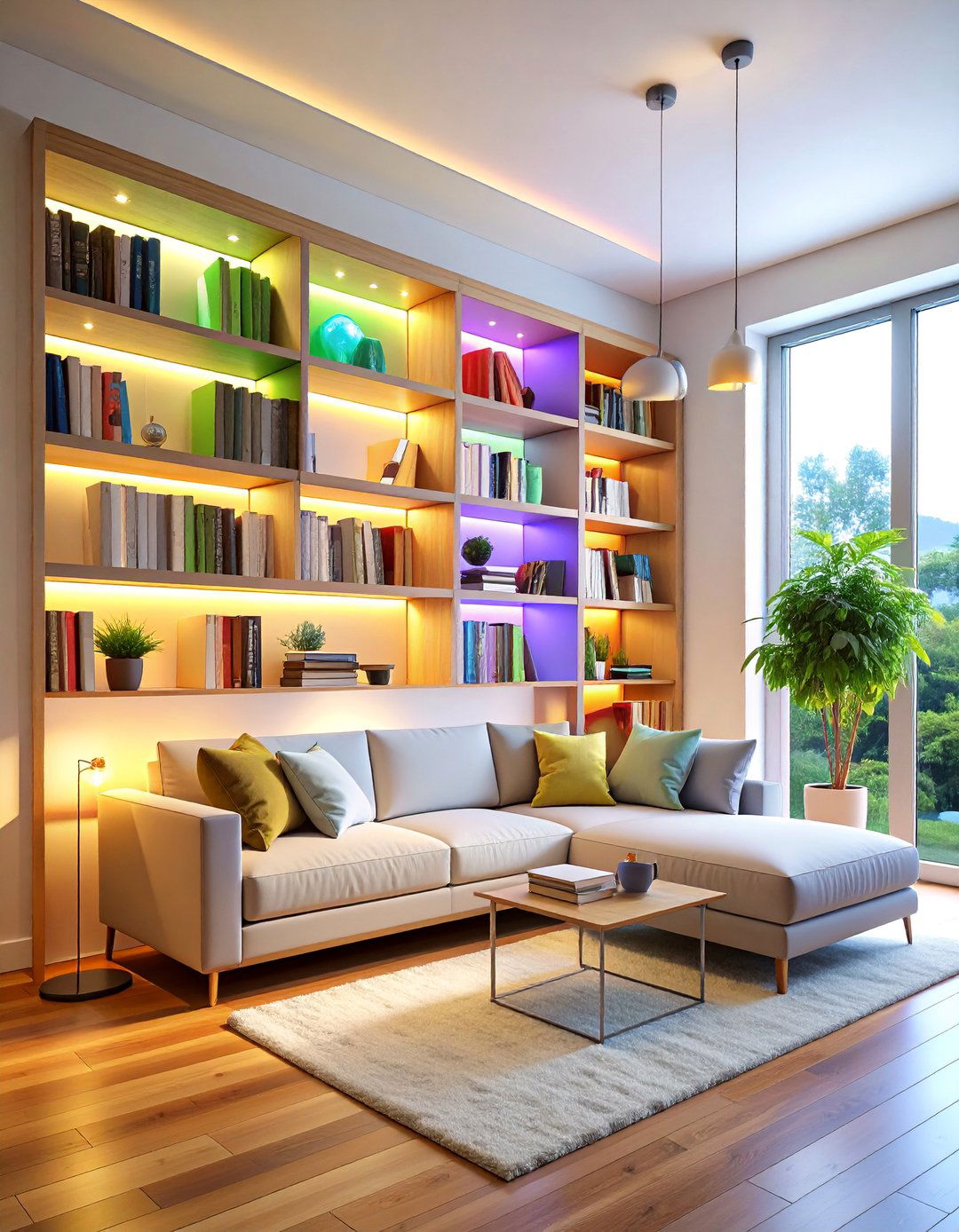
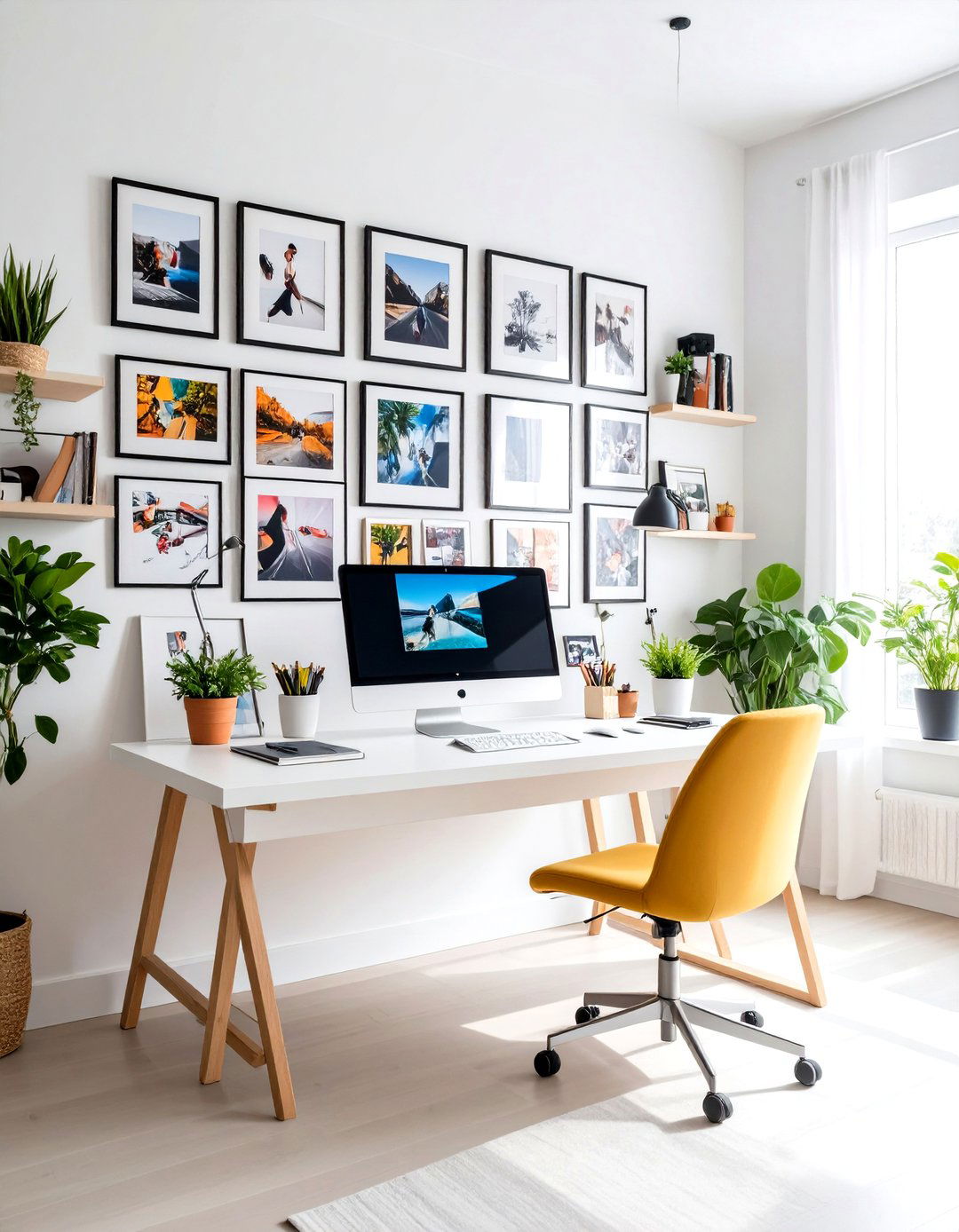

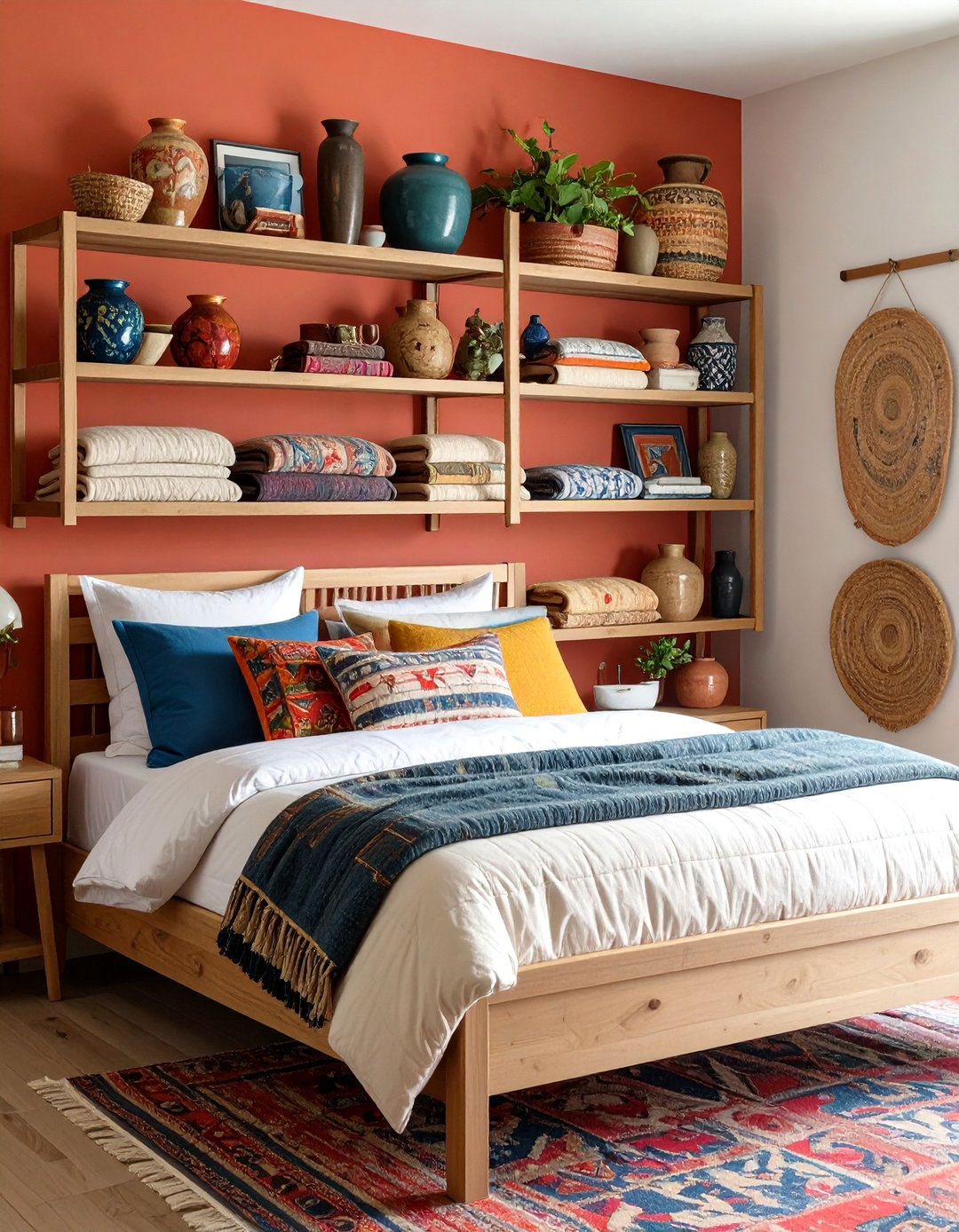
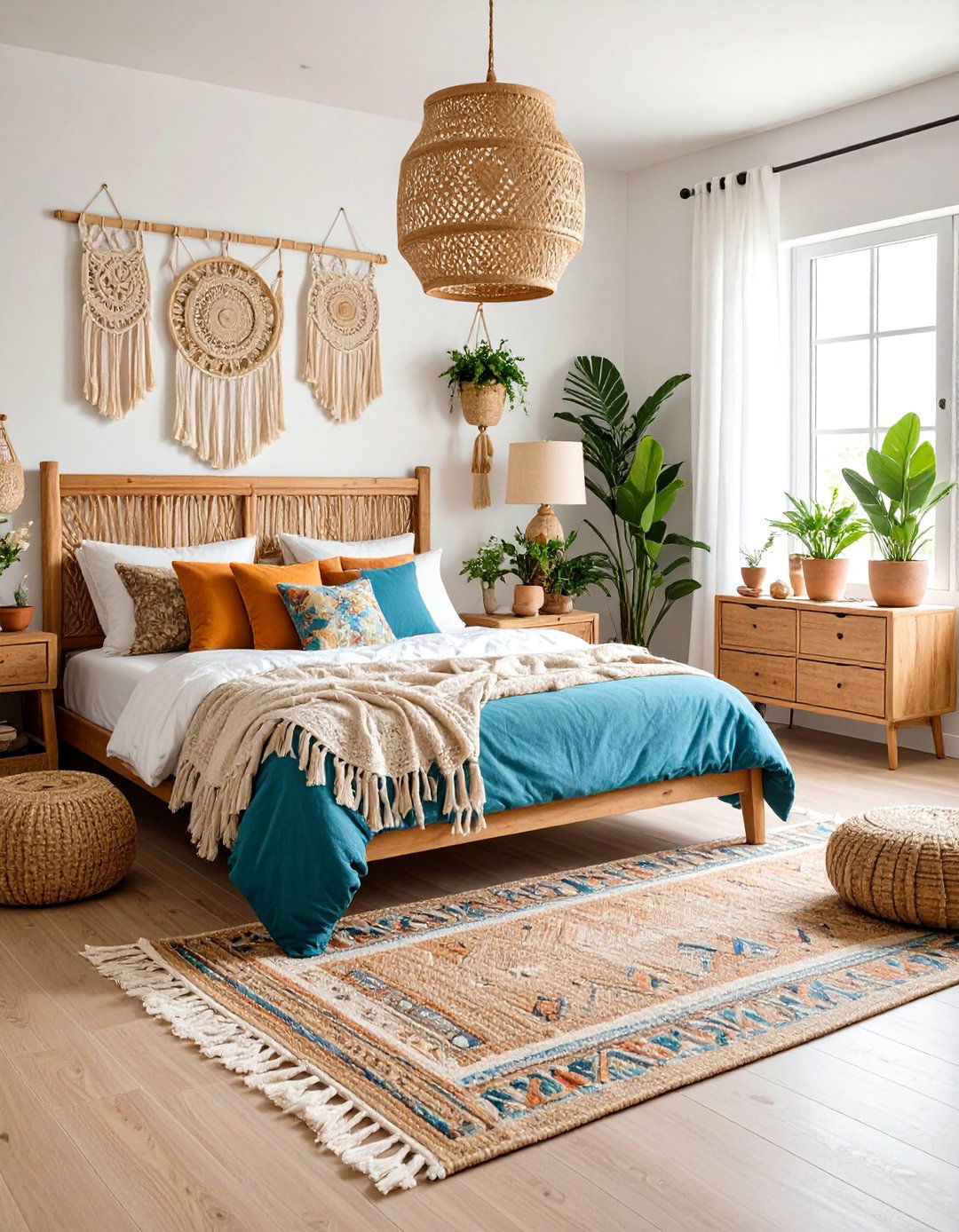
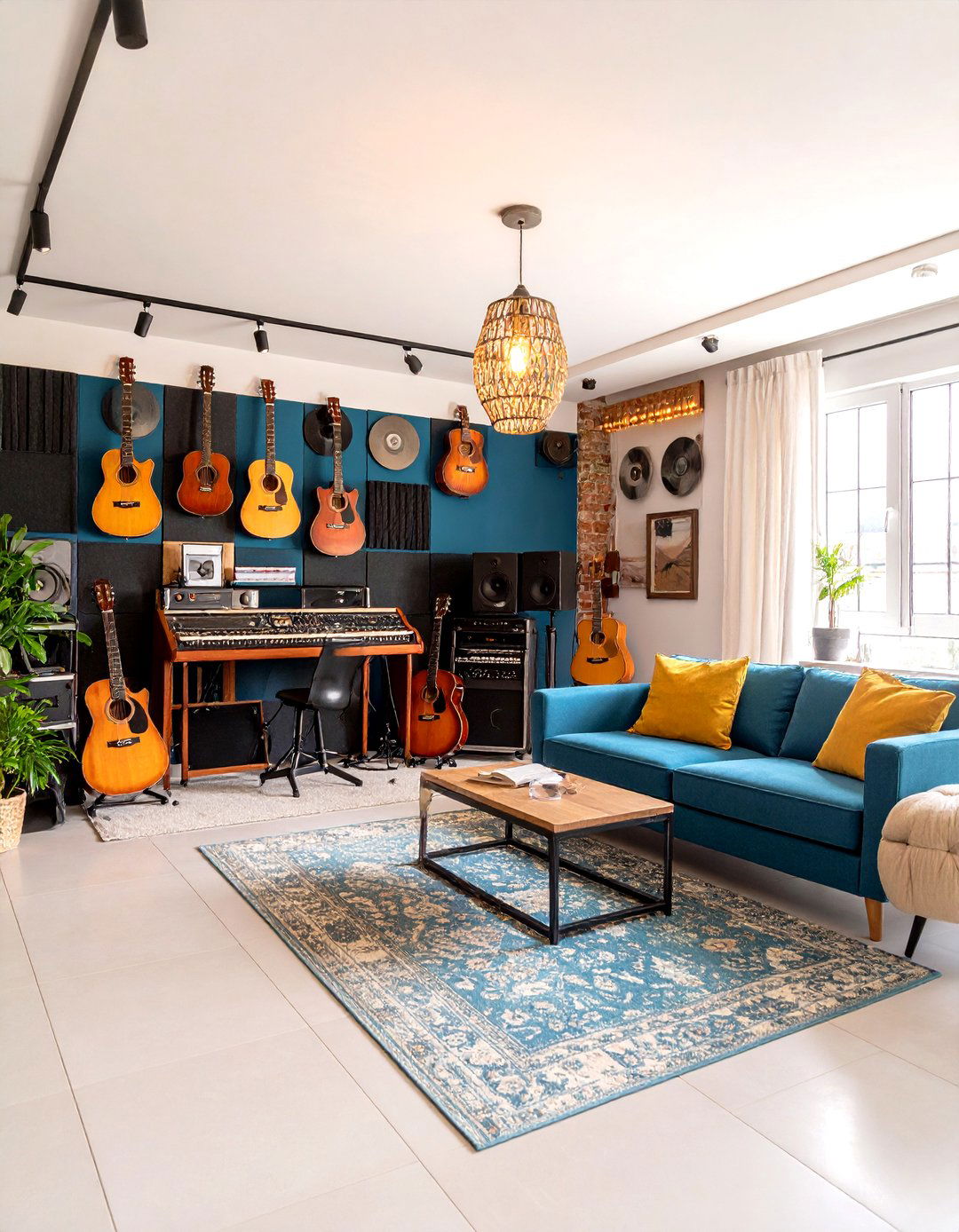
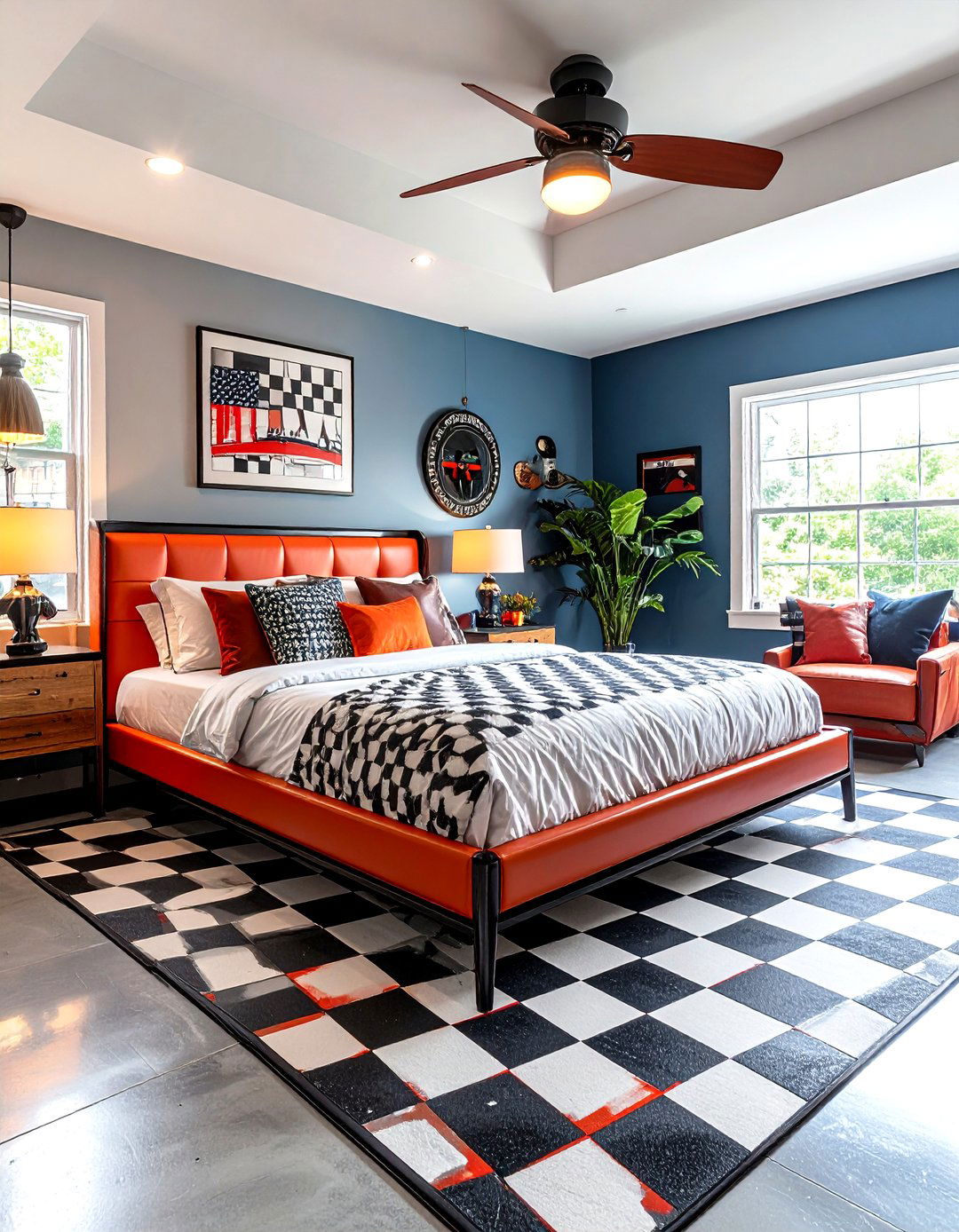
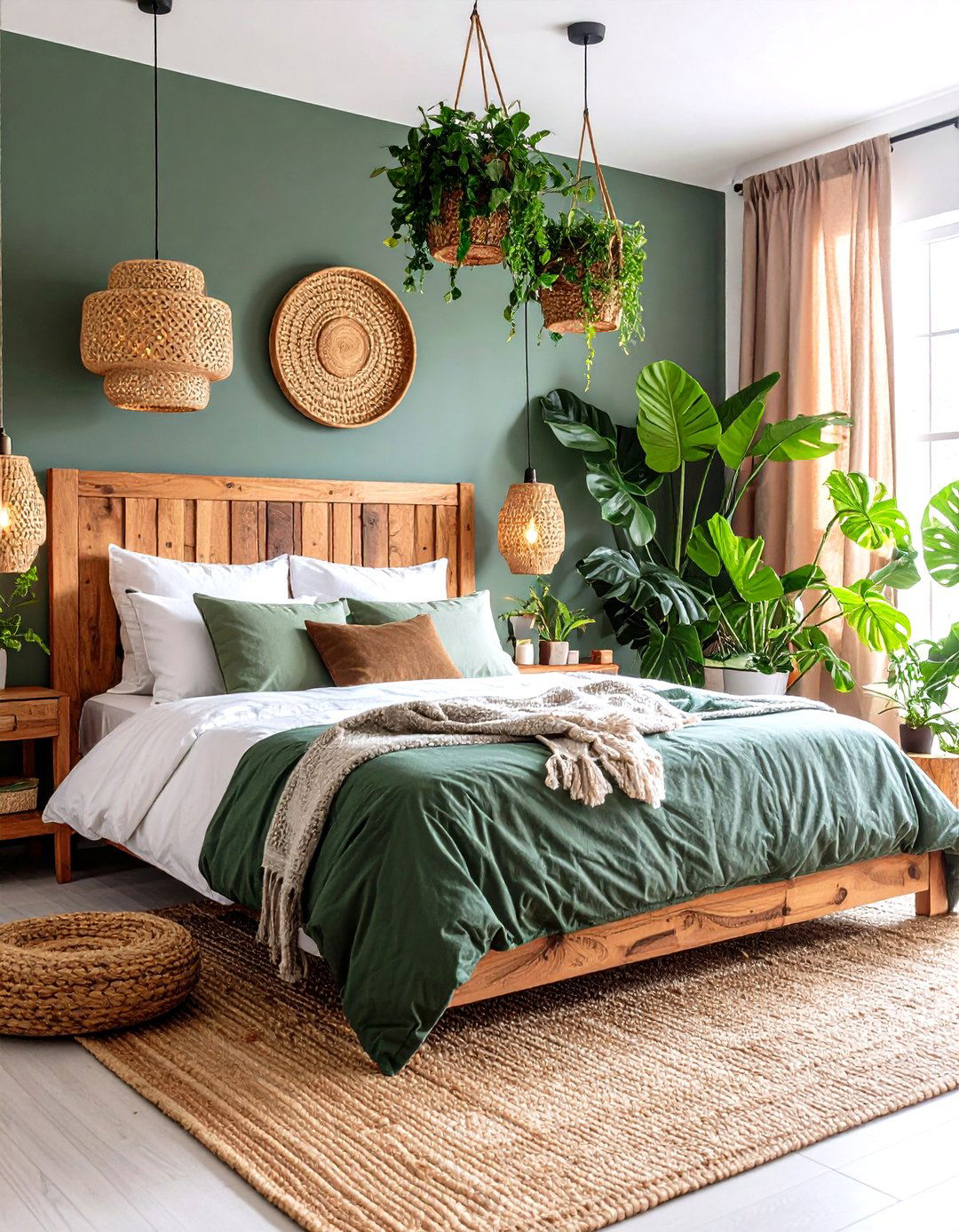
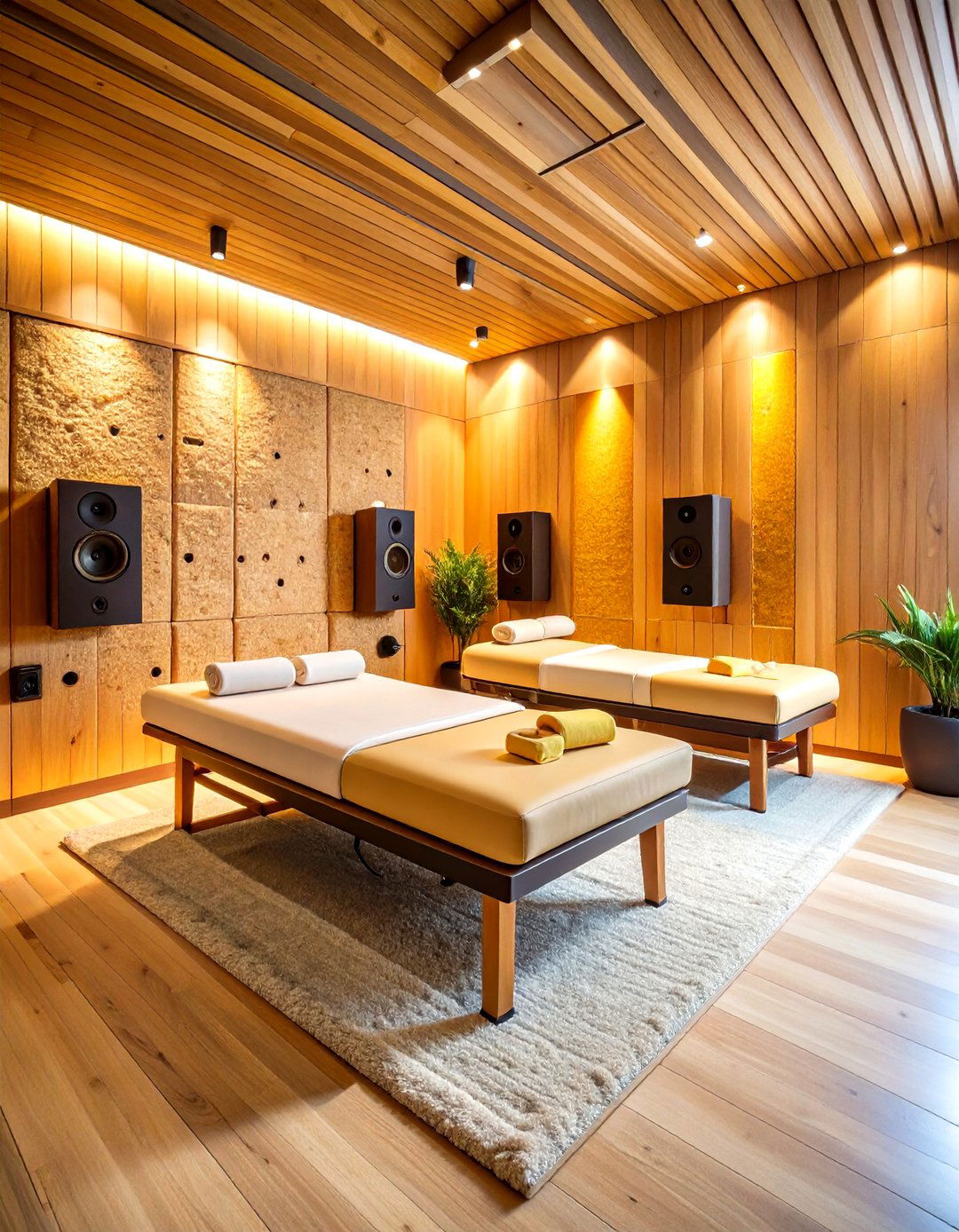
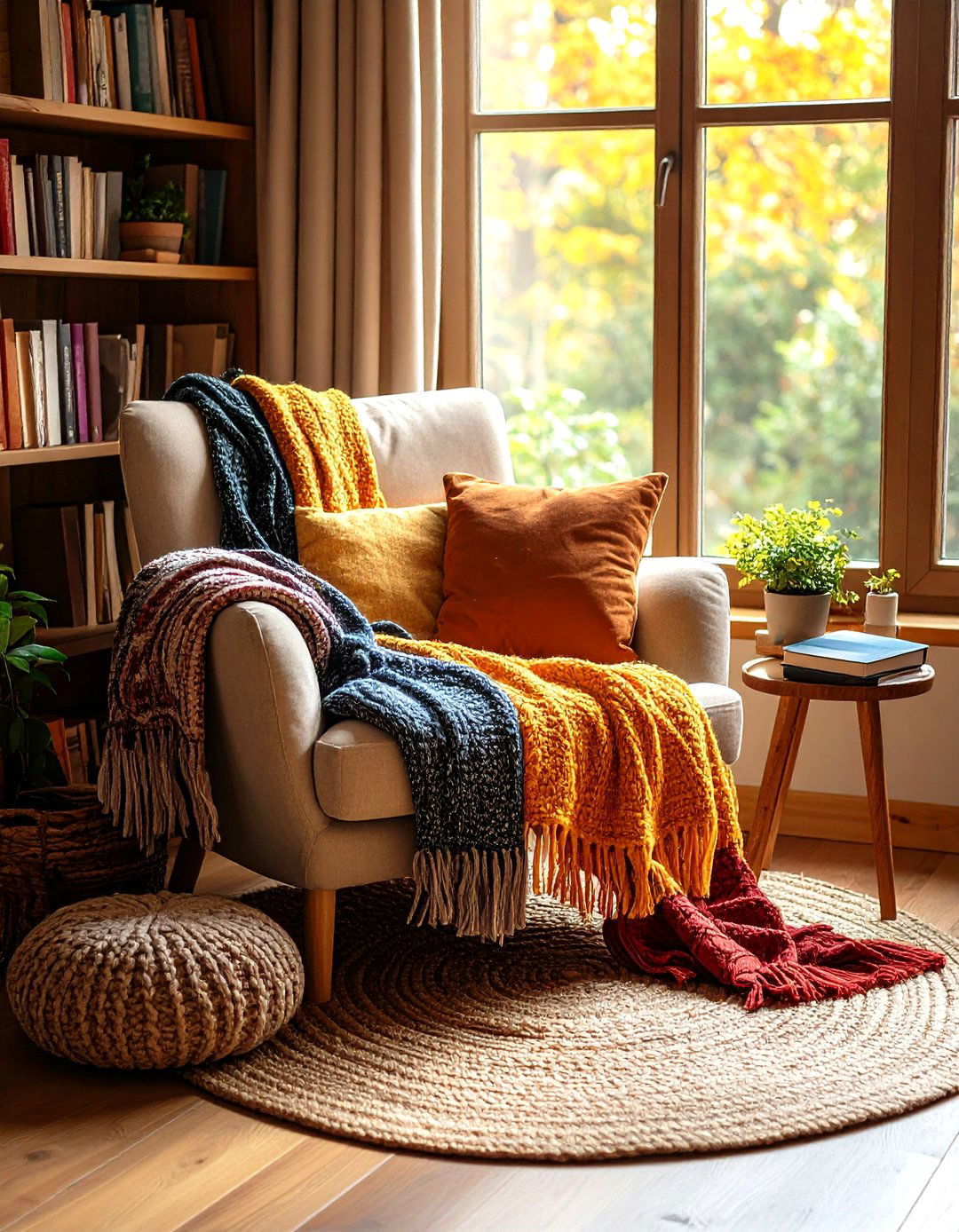
Leave a Reply